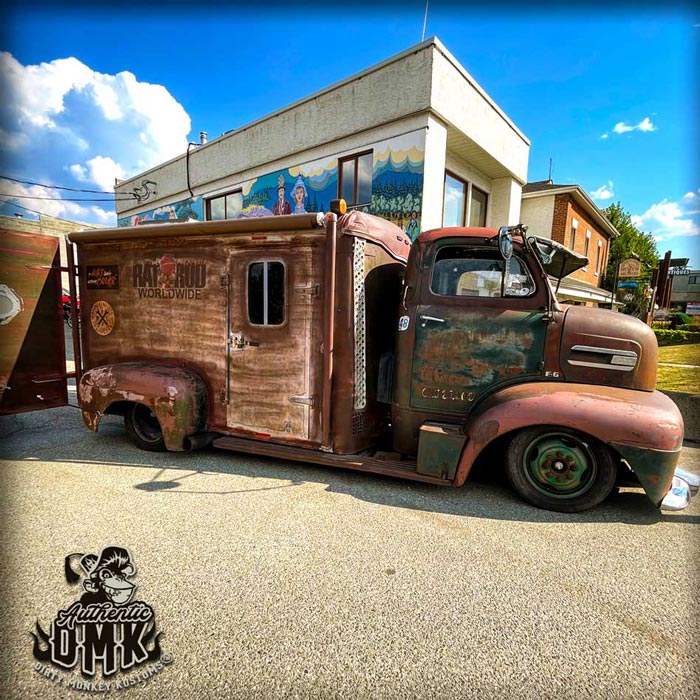Talk about your brand
Use this text to share information about your brand with your customers. Describe a product, share announcements, or welcome customers to your store.

Featured product
Testimonials
Image with text
Pair large text with an image to tell a story, explain a detail about your product, or describe a new promotion.
Blog posts
Hot Rod Louvers
Not just pretty dimples
Hot rods have been an important part of American car culture for over a century. These cars are typically modified to improve performance and style, and one popular modification that has been used for both purposes is the addition of louvers to the bodywork. Louvers are essentially slits or vents cut into the metal of the car, allowing air to flow through and improving both aerodynamics and engine cooling. In this blog, we'll take a closer look at the history of louvers on hot rods and how they became such an iconic feature of these vehicles.
The origins of louvers can be traced back to the early days of aviation. Airplanes needed to be streamlined and aerodynamic to fly efficiently, and early aircraft designers discovered that adding small slits or vents to the skin of the plane could help improve airflow and reduce drag. This design feature was known as "surface cooling" and was widely adopted by aircraft manufacturers in the early 20th century.
In the 1930s and 1940s, hot rodders began to experiment with louvers on their cars. These early hot rods were often built from old Model T or Model A Fords, which were easy to modify and customize. Louvers were added to the hoods, fenders, and other body panels to help cool the engine and improve aerodynamics. The trend caught on quickly, and soon louvers were a common feature on many hot rods.
The use of louvers in hot rodding reached its peak in the 1950s and 1960s. During this time, hot rods were becoming increasingly popular, and the customization options available were expanding rapidly. Louvers were used not just for function but also for style, and many hot rods featured elaborate louver patterns on their hoods, roofs, and fenders. The louvers were often arranged in geometric patterns or sweeping curves, creating a unique visual effect that was both functional and eye-catching.
In the 1970s and 1980s, the popularity of hot rodding began to decline, and the use of louvers on cars became less common. However, in recent years there has been a resurgence of interest in hot rods and custom cars, and louvers are once again being used to improve both the function and style of these vehicles. Modern hot rodders are using computer-aided design and advanced manufacturing techniques to create intricate louver patterns that were not possible in the past.
Louvers have a long and rich history in hot rodding. What started as a functional design feature on airplanes has become an iconic element of the hot rod aesthetic. Louvers are not just a way to improve airflow and cooling; they are also a way for hot rodders to express their creativity and individuality. Whether you prefer the classic look of a 1930s hot rod or the sleek modern style of a custom-built street rod, louvers will always be an important part of hot rod culture.

Origins of the Rat Rod
The origins of rat rods can be traced back to the 1950s and 1960s, when young hot rodders began to experiment with creating cars that were intentionally rough and unfinished-looking. These cars were often built using whatever parts were available, and they were meant to be driven hard and fast, without worrying too much about appearances. Over time, the style evolved, and the term "rat rod" came to be used to describe these cars that had a raw, rat-like appearance.
One of the defining features of rat rods is their rough, unfinished appearance. Unlike traditional hot rods, which are typically painted and polished to a high shine, rat rods are often left in a state of partial disrepair. Rust, primer, and other imperfections are embraced as part of the car's character, giving it a gritty, industrial look. In some cases, rat rods are deliberately "aged" to make them look even more weathered and worn.
Another key feature of rat rods is the use of salvaged or recycled parts. Rat rod builders often scour junkyards and salvage yards for old cars and trucks, looking for parts that can be repurposed to build their cars. This gives rat rods a unique look and feel, with mismatched parts and a hodgepodge of components that reflect the car's DIY origins.
Rat rods have become increasingly popular in recent years, with car enthusiasts around the world embracing their unique style and DIY ethos. While they're not for everyone, rat rods offer a refreshing alternative to the highly polished and heavily modified cars that dominate many car shows and events. They celebrate the spirit of hot rodding as it was originally intended - as a way for young people to experiment with car customization and express their creativity without worrying about conforming to traditional standards of beauty or style.

In conclusion, rat rods are a fascinating and uniquely American form of car customization that have captured the imagination of car enthusiasts around the world. With their rough, unfinished appearance and DIY origins, they offer a refreshing alternative to the highly polished and heavily modified cars that dominate many car shows and events. Whether you love them or hate them, there's no denying the impact that rat rods have had on American car culture, and their legacy is sure to endure for many years to come.
















